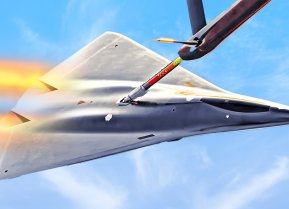Iowa-Class: The Best Battleships the U.S. Navy Ever Built
The Iowa-class battleships, the last of their kind, symbolize the end of the battleship era. Commissioned during World War II, these steel giants boasted impressive firepower with 16-inch guns and exceptional speed, reaching up to 35 knots.
Summary and Key Points: The Iowa-class battleships, the last of their kind, symbolize the end of the battleship era. Commissioned during World War II, these steel giants boasted impressive firepower with 16-inch guns and exceptional speed, reaching up to 35 knots.
-Designed to support the U.S. Navy's carrier battle groups, they combined heavy armor with agility.
-Despite their dominance in the 1940s, technological advancements rendered battleships obsolete, leading to their decommissioning by the late 1990s.
-Modernized in the 1980s with advanced missiles and systems, they saw action in the Gulf War but ultimately retired, marking the end of an iconic naval legacy.
Iowa-Class Battleships: The End of an Iconic Naval Era
For the U.S. Navy, the Iowa-class battleships represent the last battle cry of one of the most impactful weapon systems in the history of mankind.
Steel behemoths with impressive firepower, battleships entered service in the final decades of the 19th Century and ruled the waves until the end of World War Two. Technological advances and the introduction of the aircraft carrier exposed the weaknesses of battleships and rendered them a liability.
But before the carrier battlegroup concept made these steel behemoths obsolete, the Iowa-class battleships showed the world why battleships ruled the seas for decades.
The Iowa-class Battleships
The Navy built and commissioned four Iowa-class battleships: the namesake USS Iowa, the USS New Jersey, the USS Missouri, and the USS Wisconsin.
Two additional warships, the USS Illinois and USS Kentucky, were laid down but never made it out of their shipyards, getting instead canceled.

When it came to primary armament, the Iowa-class battleships carried three turrets with three 16-inch Mark 7 guns each. Two turrets were located at the fore of the warship and one at the back. The 16-inch gun (406mm) Mark 7 gun could fire a high explosive or armor-piercing round at ranges of more than 23 nautical miles (about 27 miles). These guns were massive, each weighing almost 270,000 pounds. Their rounds were enormous, too. Each high explosive shell weighed almost 2,000 pounds, while the heavier armor-piercing shells weighed approximately 2,700 pounds.
In terms of secondary armament, the Iowa-class battleships packed two 5-inch (127mm) Mark 12 guns in enclosed base ring mounts along the starboard and port sides of the warship. These guns were mainly used for air defense purposes—American warships in the Pacific had to deal with the deadly Japanese Kamikaze pilots—but could strike at naval and ground targets as well. For purely air defense purposes, the Iowa-class battleships carried 20 quad 40mm and 49 single 40mm Bofors guns for a total of 129 40mm anti-aircraft guns.
At 860 feet long and with a draft of 37 feet, the Iowa-class battleships were impressive in size.
But what made the Iowa-class battleships remarkable was their speed. The Iowa-class battleship was designed for speed so it could keep up with the emerging concept of carrier battle groups. As a “fast battleship,” the Iowa-class emphasized speed but without compromising on firepower or armor. Despite carrying a weight of 58,500 tons, ships of the class could reach speeds up to 35 nautical knots (40 miles per hour) with light loads or 33 nautical knots (38 miles per hour) with standard loads. For a warship designed and built in the 1940s, that is an impressive speed. Modern warships like the Arleigh Burke guided missile destroyers reach speeds of 30 nautical knots (or 35 miles per hour) despite decades of additional technology.
Following the end of World War Two, the U.S. Navy decided that battleships were becoming a liability rather than a bonus. In a series of refitting that lasted well into the 1980s, Iowa-class battleships were modernized with new electronic systems, Tomahawk cruise missiles, Harpoon anti-ship missiles, and Phalanx CIWS automated chain guns. Some ships of the class fought in the First Gulf War, but by the late 1990s, they were all decommissioned.
About the Author
Stavros Atlamazoglou is a seasoned defense journalist specializing in special operations and a Hellenic Army veteran (national service with the 575th Marine Battalion and Army HQ). He holds a BA from Johns Hopkins University and an MA from the Johns Hopkins School of Advanced International Studies (SAIS). His work has been featured in Business Insider, Sandboxx, and SOFREP. Email the author: [email protected].
Image Credit: Creative Commons.


